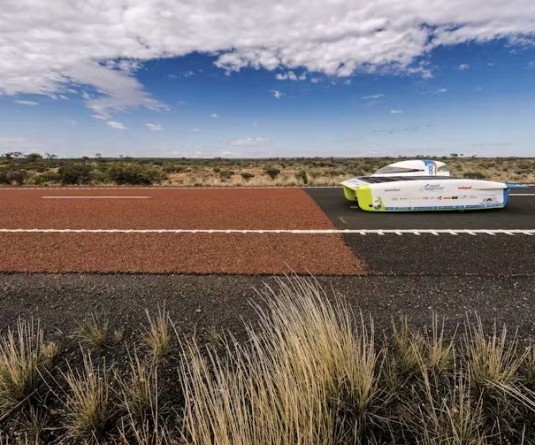
Justice and equity lie at the core of sustainable development, the Nagaland Vision 2030 states adding that no society can be considered developed unless all the constituents equally progress. While Nagaland itself is considered underdeveloped among States of India, it pointed out that, within the State, some areas are relatively less developed than others. While some pockets of under-developed areas within the districts are considered more advanced, however, the entire areas of Eastern Nagaland (EN) have the relatively common feature of backwardness requiring special attention.
As a part of its series on ‘Nagaland Vision 2030’ documents, The Morung Learning looks at the chapter on regional disparity focusing on Eastern Nagaland areas along with development strategies for the region. According to the document, Eastern Nagaland covers an area 6028 sq km comprising of 36.37% of the total geographical area and 5, 71,344 persons or 28.88% of the total population of the State. While in some areas, the region is comparable, in most others there are huge disparities. Some of the development indicators highlighting the disparity between the areas of Eastern Nagaland and the rest of the State are given below.
Roads: The total length of roads in the Eastern Nagaland areas account for about 29.80% of the total roads of Nagaland, indicating a lower road density of 71.07 km as against 95.70 km per 100 sq km in other parts of the State. Presently there are no National Highways in Mon and Longleng district and the two roads under SARDP meant to connect the district headquarters to the State capital have been unfinished projects for over five years. Thus, road connectivity, even to district headquarters are deplorable.
In the other areas, the document noted that the Border Roads Organization which used to provide basic connectivity in past appear to be in a dilemma about the roads under their responsibility and the quality of roads under their charge have also degraded substantially during the last decade.
Although Tuensang and Kiphire are connected by National Highways, these roads have so far been accorded low priority.
As a way forward, it recommended the following:
• The SARDP roads should be completed with utmost urgency.
• The existing National Highways connecting Tuensang with Mokokchung and Kiphire with Kohima should be made into two-lane in the next three years.
• The proposed National Highway connecting Tuensang to Mon and beyond to Sibsagar should be taken up on priority basis among the new approved or declared National Highways for Nagaland.
• A special road to connect Noklak/Pangsha via Tobu to Assam via Longleng is an imperative. The upgradation of the existing road will connect the most underdeveloped areas of Nagaland with the other areas and will substantially change the economies of these areas.
• Special road maintenance program have to be evolved for the roads of the Eastern Nagaland areas for which special funds have to be earmarked.
Power: In terms of power infrastructure from the perspective of villages electrification, it noted that Eastern Nagaland areas give a relatively better picture with the percentage of villages electrified almost at par with the rest of the State. In fact Kiphire is the only district of Nagaland that has 100 percent villages electrified.
Water Supply: As against the average of 40.72% of habitations fully covered in the rest of Nagaland, water supply coverage in the rural areas in the Eastern Nagaland areas is only 31.65%. However, in terms of partially covered villages, the average in the Eastern Nagaland areas is 68.35% as against 56.47% coverage in the rest of Nagaland.
In the urban areas, Mon district headquarter has the highest availability of water with 46.46 LPCD (Litres Per Capita/Day) and Tuensang with 24.20 LPCD. These are relatively better than the other districts with 11.56 LPCD for Kohima, 9.45 LPCD for Zunheboto and 7 LPCD in Mokokchung. Longleng and Kiphire remain at the bottom in terms of water supply with Kiphire at 5.29 LPCD while Longleng town has no piped water supply at all.
Education: A clear disparity according to the Vision 2030 is in education and its related issues. A cursory glance of the literacy rates of the various districts of Nagaland show that the Eastern Nagaland areas are clearly behind other districts of the State. The literacy rate of Mon district especially female literacy is a matter of concern where some pockets have as low as 17 percent% female literacy.
In terms of availability of school infrastructure in the Eastern Nagaland areas, figures indicate satisfactory progress. However the setback is in the absence of private schools, especially at the higher secondary and the high school level is a big concern. (See table)
For the Government schools, incentivization programs can be drawn to attract teachers from outside the Eastern Nagaland areas, especially Maths and Science teachers. To really improve educational standards, it is essential to induce private schools to be set up in these areas for which the government could evolve an incentive or promotional policy. A possible model is the Public Private Partnership (PPP) model used in other parts of the country where the management of schools is left to the private sector.
College Education: The Eastern Nagaland areas are deficient in higher education. This is perhaps due to the inertia of the private sector to set up colleges or institutes of higher learning in the area. While Government colleges need to be strengthened to improve the quality of higher education, there are limitations to Government interventions apart from resource constraints. Therefore, appropriate policies require to be evolved to encourage and incentivize the opening of private colleges in the Eastern Nagaland areas.
Health: The health infrastructure in the Eastern Nagaland areas indicates deficiency in many areas. While District Hospitals have been established, in all the districts the Community Health Centres and the Primary Health Centres are not commensurate to the area. In addition to the shortage of health centres a special concern is the deficiency of health care workers. This is further compounded by the lack of equipments and facilities even for basic diagnostics.
Medical personnel posted in the area constitute about 20-30% of the total in Nagaland and the situation is all the more precarious given the fact that there are hardly any private hospital and private clinic to supplement the health care facilities of the Government. There are only three private nursing homes run by NGOs forcing people to travel outside for medical treatment, thus adding to their treatment cost.
Efforts to encourage private investment in healthcare facilities in Eastern Nagaland areas is necessary and for which, policies have to be drawn up.
Degree of Urbanisation: Another important indicator to measure the level of regional disparity is the degree of urbanisation. The State as a whole has a low urban population of 28.86%. Only Dimapur and Kohima districts have higher percentage of urban population compared to the State’s average. Eastern Nagaland has 16.68% of its population living in urban areas, while rest of the State has 33.80%.
Employment Scenario: As per Economic Census conducted in 2013, there are 1,61,818 persons employed in the private enterprises in Nagaland, out of which persons from Eastern Nagaland constitute 22.26% and persons from rest of the State constitute 77.74%.
It also recorded 60937 enterprises, 15311 in Eastern Nagaland and 45626 in the rest of the State. Out of this, persons from Eastern Nagaland concentrated in retail trade were 11210 employees, followed by education with 6678 persons and manufacturing with 5902 persons.
Notably, the type of enterprises is mostly rural-based, recording 76.98% of the total enterprises in Eastern Nagaland as against 23.02% in the urban areas.
Meanwhile the rural based enterprises in other parts of the State was 47.47% as against 52.53% urban based out of the total 45626 enterprises.
Thus, Eastern Nagaland economy is agriculture based and focus has to be on this sector for the economy to take the path of growth.
Mines and Minerals: The Eastern Nagaland region is richly endowed with mineral resources and therefore pertinent to pay attention to exploitation of natural and mineral resources of the region. Apart from oil, all other major natural resources of Nagaland namely coal, limestone and nickel, cobalt and chromium bearing magnetite, bio-diversity and hydro power are located in the Eastern Nagaland areas. Special policies for exploiting these resources require to be evolved early so that by 2030, the resources are optimised for productive use. The policy will have to include provision of roads and connectivity for exploitation of the resources.
Tourism: The Eastern Nagaland areas are repository of the rich traditional culture of the Nagas as traditions and customs are still practiced to a large extent. Similarly, the rich biodiversity which still exist in the area can be developed for eco-tourism. A special tourism promotion policy for the Eastern Nagaland areas is therefore necessary.
International Trade and Commerce: The development of international trade and commerce through Nagaland cannot be conceived without the Eastern Nagaland areas. Accordingly, infrastructure development along these areas need to be given due attention keeping in mind the future prospects of international trade and commerce. An appropriate policy therefore, needs to be evolved as this will greatly add to the general development of the entire state.
(Source: ‘Nagaland Vision 2030’, Government of Nagaland, 2016.)





